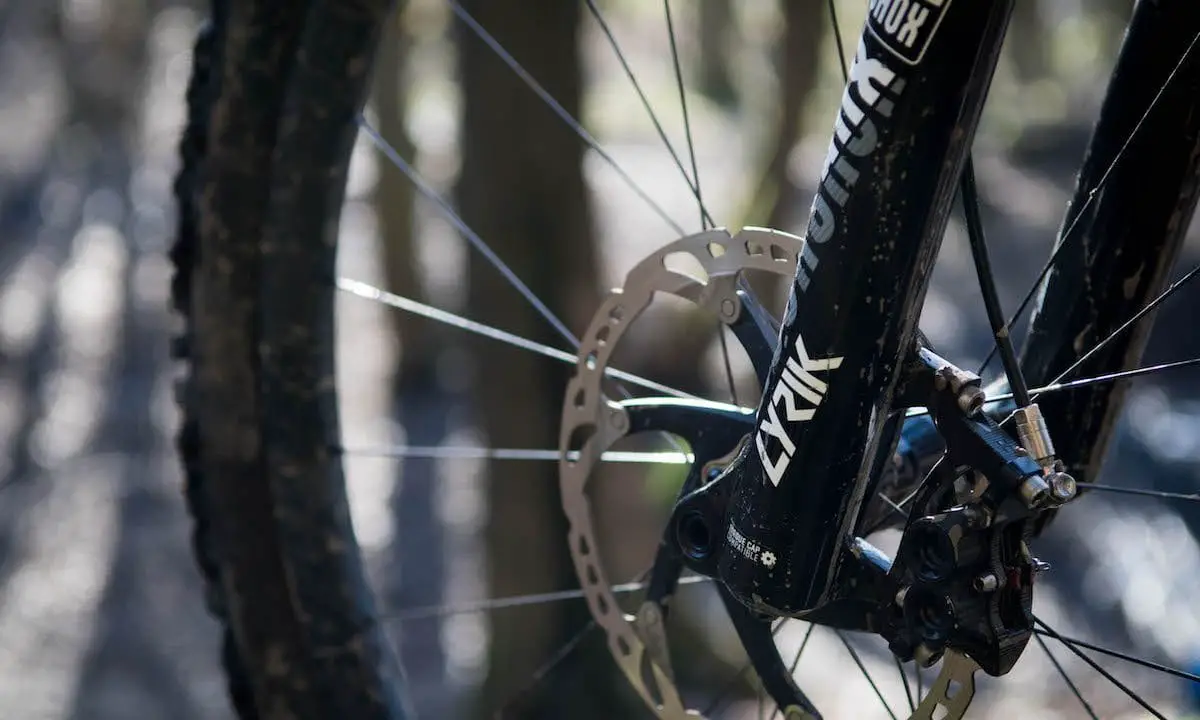For 2018, both Fox and RockShox have come out swinging with updates to their long-travel suspension forks: Fox with its new 36, and RockShox with the new Lyrik. Over the past six months, Barney and Wil have been back-to-back testing one of each. Both forks are of the 29in variety and setup with 150mm of travel. Here Barney takes us through his experience with the Lyrik.
The Lyrik has, for some time, been at the top of the RockShox tree when it comes to trail/enduro/gnar/grr forks, although perhaps superseded in the mountain biker’s consciousness (if that’s not an oxymoron) somewhat by the all-conquering Pike. But technology proceeds apace, and Rockshox has tried to make sure that the Lyrik still has what it takes when you throw it down the hillside.
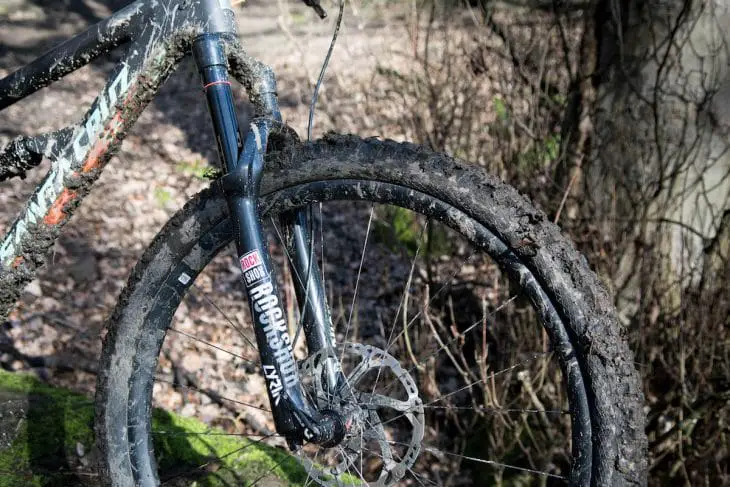
2018 Rockshox Lyrik RCT3 features
- Long-travel 29er trail & enduro fork
- 35mm diameter stanchions
- 150mm travel (available with up to 180mm travel)
- Designed for 29in or 27.5+ wheels
- Maximum tyre width: 29×2.8in or 27.5×3.0in
- DebonAir spring (Dual Position also available)
- Charger 2 damper
- Adjustments: Air pressure, air spring volume (Bottomless Tokens), rebound, 3-position compression (open, pedal, firm), low-speed compression in ‘open’
- 110x15mm Maxle Lite thru-axle
- 1.5in tapered alloy steerer
- Actual weight: 2040g
- RRP: £978
Aesthetically, it’s hard to distinguish the forks from others in RockShox’s lineup. Our test pair has a black crown, black 35mm stanchions and black lowers, enlivened by white and grey graphics. The ‘Lyrik’ decal is relatively small and understated. If you removed it, it’d be rather tricky to differentiate these forks from the (also 35mm stanchioned) Pike – or the Revelation or Yari, come to that.
Hidden Depths
The differences are externally subtle then, but the Lyrik has plenty of tweaks inside, where it counts. For the 2018 model year, the 29er Pike tops out at 140mm of travel (160mm for the 27.5in) whereas the Lyrik goes up to 180mm for either wheel size. The crown and stanchions have been beefed up accordingly to cope with the extra stresses of all that additional travel, so our 150mm 29er fork, steerer cut down, weighs in at a perfectly manageable 2040g. Alongside the rest of the range, the Lyrik is now only available to fit a 110x15mm front hub, though the widened stance means there’s enough space in there to run up to a 29×2.8in tyre if you so choose. That’s some serious rubber.
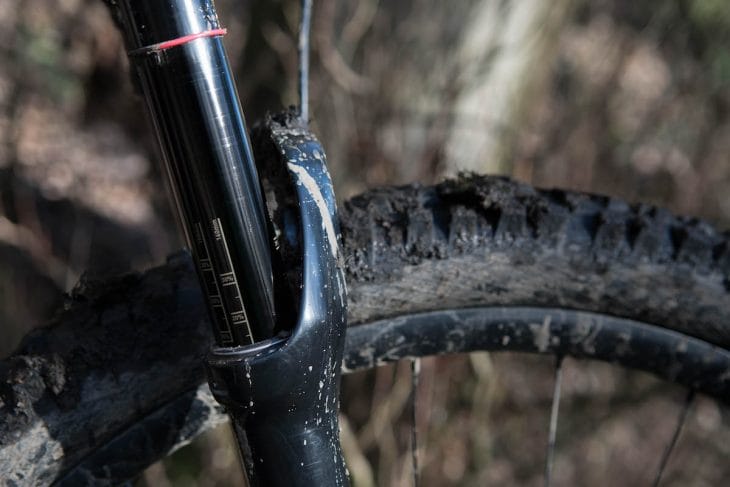
Digging a bit deeper inside our Lyrik, in one leg we find the DebonAir spring. Its appearance across many Rockshox forks (it’s far from exclusive to the Lyrik) is being heavily trumpeted this year, although it actually appeared to much less fanfare in last year’s Lyrik too. DebonAir purports to increase the relative size of the negative air chamber and also to (paradoxically) make the spring curve somewhat more linear. The idea is to enable greater small-bump sensitivity, without cocking up any big-hit handiness the fork possesses further into the travel. Of course, if the out-of-the box rate isn’t quite to your liking, you can still easily twiddle the spring rate with RockShox’s bottomless tokens. These are essentially lumps of space-occupying plastic whose presence make the air chamber smaller to give more of a ramp for hard-hitting, weight forward lummoxes. Take them all out, and you get a more linear spring rate for those people who prefer to give their rear tyre a clean with their shorts when riding the steep stuff. It’s simple, and it works.
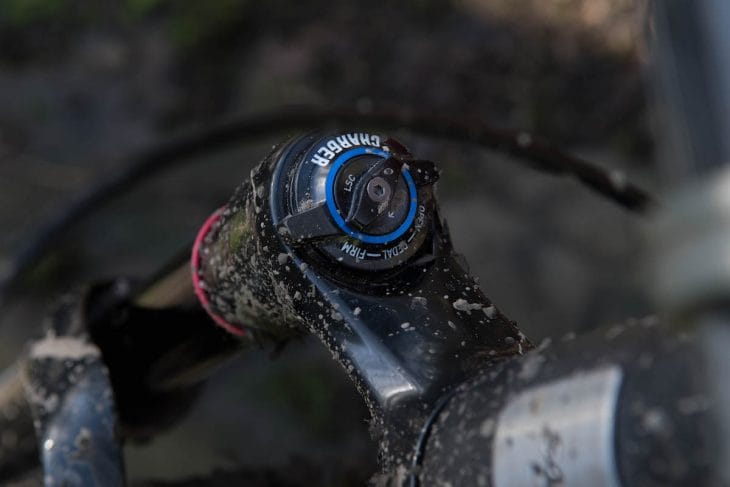
On the other leg (arf), the Charger 2 damper differs from the already rather handy specimen from years past by actually being a little more gentle. Gone is the effective lockout from the original Charger damper, and in comes a ‘firm’ setting – still good for climbing, then, but not quite such a teeth-shaker if you find yourself in mid air before you remember you forgot to open the thing back up.
There’s also a wider range of low-speed compression tuning when the circuit’s set to fully open, which is always welcome, especially for those of us whose physiology necessitates some deviation from the mean in the tweakage department. If you’re bigger, it’s better, in effect. There’s also external rebound adjustment too, natch.
It’s also possible to get the Lyrik with a RCT remote, which lets you switch between open and firm settings at the push of a lever, if festooning your bars with gadgets is your thing.
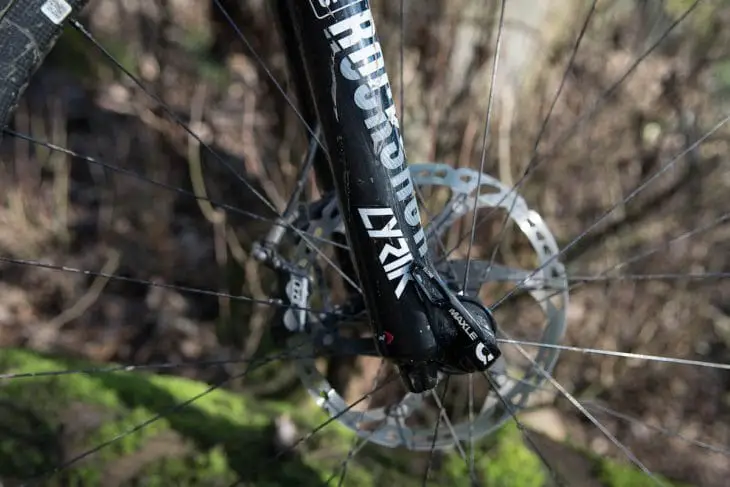
Fettle & Forget
So, it’s the usual simplicity/faff (delete as applicable regarding your workshop competencies) to cut the steerer down, and install the fork. One thing that’s possibly worth bearing in mind is that, like many of Rockshox’s competitors, the brake mount has been upgraded to 180mm as standard. This is no bad thing, but it does mean that you might be ferreting about in your parts bin to find an appropriate adapter if you wish to run 203mm (as oppose to 200mm) rotors.
On the bike, it looks – well, pretty understated really. Gone are the days of Rockshox’s ostentatiously yellow/blue/gold forks – Chipps may well be shedding a tear – but, well, black goes with everything, and you can get vinyl in all sorts of colours these days to add a little extra colourific spice. But as it stands, Rockshox is definitely aiming for ‘subtle’. Perhaps it’s me, but I’d quite like something to distinguish the different forks in the range a little more. As it is, they all blend into each other, and I’m just a big ol’ showoff.
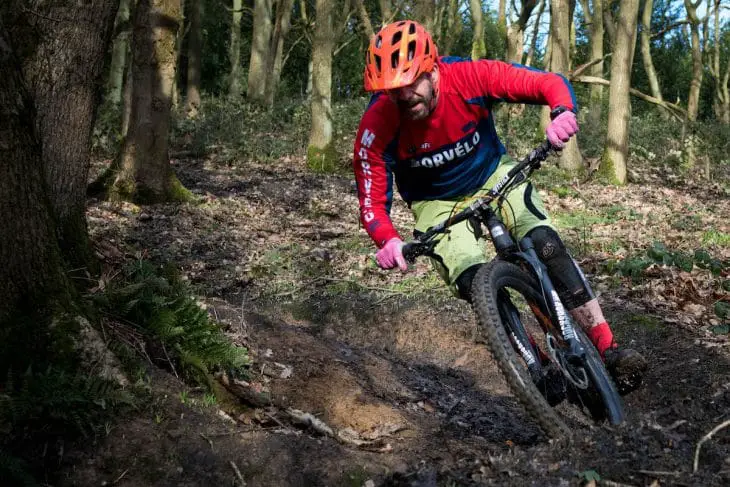
Lyrikal Flow
But aesthetics is one thing; performance is quite another. Straight out of the box, I found the fork sat a little lower into its travel than other forks I’ve recently been riding (OK, OK, the Fox 36), and it was incredibly plush from the outset. I had to do a fair amount of tweaking to set things up just so, but there are naturally lots of options to fiddle with – bottomless tokens are easy to fit and remove in the workshop, and low-speed compression and rebound are a cinch to fiddle with on the trail. It should only take a couple of rides to dial things in to more or less your specification. As a blank tune, though, the fork seems pretty well set up out of the box.
Does it feel stiffer than its slightly lighter, slightly less well travelled sibling, the Pike? It’s a hard call. I’ve ridden 150mm Pikes, 150mm Lyriks (and 150mm Yaris for that matter) and they all perform extremely well. It’s possible that in scrupulous back to back testing on the same terrain in the same conditions you might be able to pull some differences out of there, but it’s more a testament to how stiff the lesser forks are rather than a failing in the flagship one. The Lyriks track predictably, and corner well; even when weighted hard there’s little binding to throw you off.
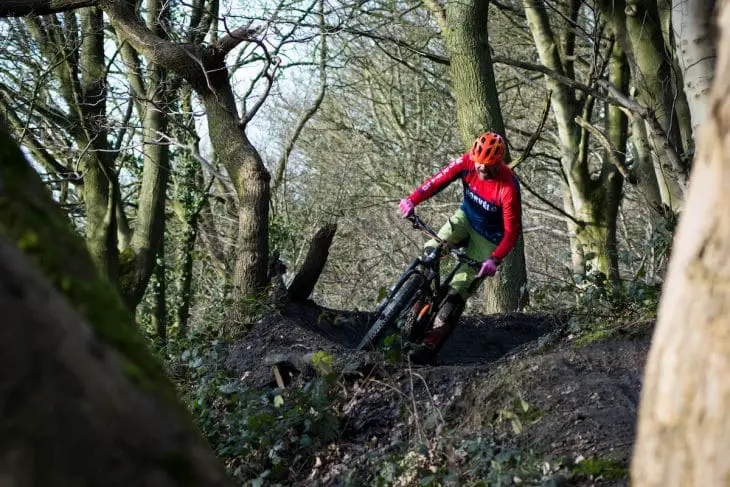
The new Charger 2 circuit performs similarly to the old one; I was glad of the extra adjustment to be sure, but once it was set there was little to choose between them – apart from a little more lassitude in the ‘firm’ setting, which is less a setting and more of an ineptitude filter in any case.
Small bump sensitivity was as good as the ‘carpark waggle’ led us to believe, and it remained impressive even after a good deal of judicious fiddling with the settings; it’s easy to forget just how much work the fork is doing until you get the end of a section and realise that you’ve used up all the travel, and possibly just ridden something without thinking that previously required considerably more bottom puckering on lesser forks. It feels as smooth and controlled on the bigger hits as you’d hope, and there was admirably little spiking, even during my (frequent) misadventures with weight-placement. It’s good to ride products you trust, and so far the Lyrik has had my back on more occasions than I care to count.
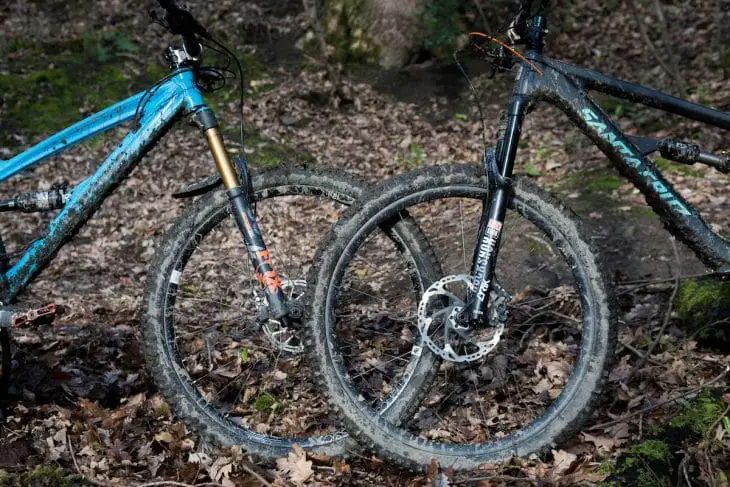
Wil’s Take
In our little battle between the Fox 36 and the RockShox Lyrik, it was the latter that first fell into my fidgety hands. This worked out well, given that the Orange Stage 5 I was using as a test platform had a 140mm travel Pike RCT3 fitted as standard. Aside from the extra 10mm of travel, this would provide an excellent opportunity to see how the Pike’s bigger brother would fare in direct comparison.
In short, the difference was instantly noticeable. While both the Pike and Lyrik forks are smooth, the Lyrik takes things up a notch. It hoovers up hits big and small alike with incredible enthusiasm, putting on a meltingly-good performance in the small-bump sensitivity show. I also found the heavier Lyrik chassis to feel noticeably more sturdy than the Pike – both fore/aft and torsionally. These two attributes combine to give the front of the bike just a little more brawn, and that gives you just a little bit more confidence to let off the brakes and wing it. I got away with A LOT on this fork that I really shouldn’t have.
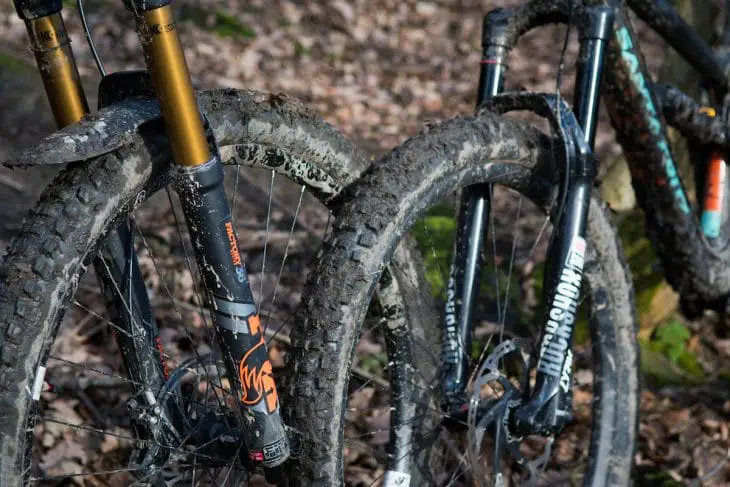
Compared to the Fox 36, I found the Lyrik to be plusher, though it does seem to spend more quality time in the middle of its travel. Whereas the 36 rides higher up in its travel, the Lyrik isn’t afraid to get stuck in. Personally, I preferred this buttery in-the-travel feel, though I can see why Barney would prefer it the other way round. Horses for courses innit? There was still excellent progression from the DebonAir spring – I ran about 73psi and a single Bottomless Token to support my 70kg riding weight – and while I never quite used full travel, the end-stroke always felt usable. And ‘usable’ is probably a fine way to describe the Lyrik. This fork doesn’t bamboozle you with a zillion clickers and levers, and it works exceptionally well straight out of the box – just follow the pressure setup guide on the back of the fork, set the rebound damping halfway, and there’s a good chance you’re most of the way there.
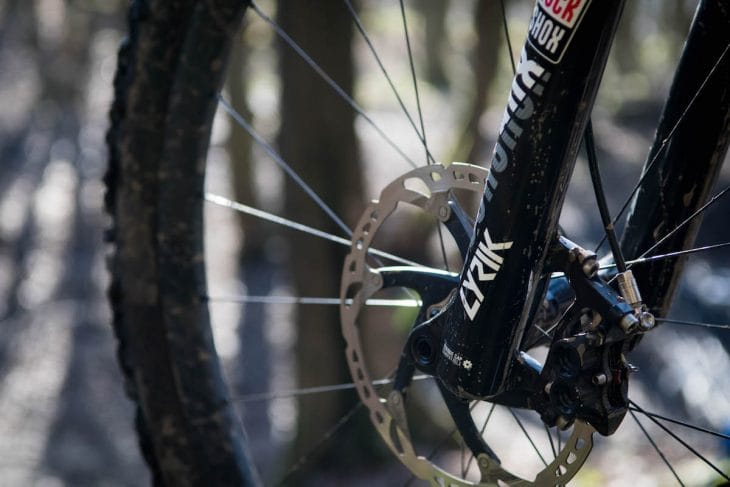
Overall
Rockshox has seemingly taken a long hard look at its offer, and pegged the Pike as it’s trail/all Mountain fork, and the Lyrik as it’s burly longe travel Enduro fork. If you want a longer travel fork, and you want the best damper Rockshox makes inside it, the Lyrik is the one to get. No, it doesn’t shout the loudest when the bike is stationary, but it speaks volumes when you’re moving, and it speaks more the faster you ride.
Review Info
| Brand: | RockShox |
| Product: | Lyrik RCT3 |
| From: | ZyroFisher, zyrofisher.co.uk |
| Price: | £978 |
| Tested: | by Barney & Wil for 6 months |
